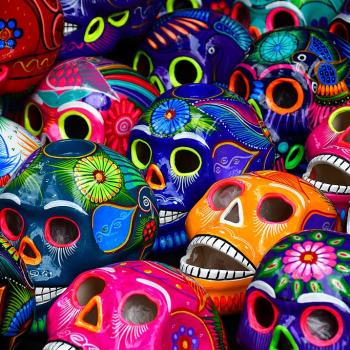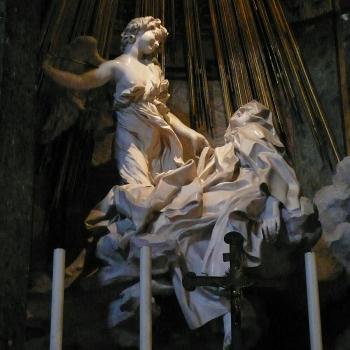For freedom Christ set us free; so stand firm and do not submit again to the yoke of slavery.
-Gal 5:1
One of my favorite novels when I was a girl was The Satanic Mill, by Ottfried Preussler. The title is not a metaphor or an allusion; the book is about a mill that is run by a man who has sold his soul to Satan. An orphan child finds his way to the mill and enters its sinister brotherhood, getting to know the other apprentices and journeymen–and, eventually, learning magic alongside them.
The novel moves to the rhythms of both the natural year and the liturgical year. It opens during Christmas, as Krabat and his fellow orphans beg from town to town dressed as the Magi, and ends at the dawn of Easter Sunday. It’s an intensely, matter-of-factly Christian novel. It’s horrifying–there’s an attempted suicide, several other violent deaths, and a general atmosphere of slowly-intensifying dread and doom–and utterly beautiful. It relies on the poetic resonance of the image of a girl’s love for a boy. (This couldn’t really be the same story if Krabat were saved by a friend. Heterosexual love draws him away from the same-sex world of the mill, and into the social and natural world of fruitfulness. The same-sex love of friends isn’t demonized at all–in fact, the love between several of the boys is lifesaving and life-shaping–but I just don’t think the book would have the same mythic resonance if it didn’t end with a man and a woman. This book is as straight as Anna Karenina; and sweeter.)
A year or so ago it was adapted into a movie. Netflix kept teasing me, keeping Krabat in its “Saved” section, but finally it gave up this joke and removed the thing entirely. I went trawling on YouTube and found this Spanish dubbed version; I believe there’s also a Portuguese dub rattling around similar locales. My Spanish is just barely good enough and my love of this book is strong enough that I watched it.
Krabat is gorgeous; I just wish the YouTube version had better picture quality. You can tell that the panoramic scenes of golden wheat and glowing blue snowlight would be just glorious on a big screen. The story comes across clearly, which means it is just way too scary and intense for a lot of small children: The suicide attempt is conveyed quite bluntly and there are some scenes of the bloody aftermath of violence, as well as menace and, you know, the Satanic arts.
Krabat himself doesn’t seem as childlike as he does in the book, which makes it slightly harder to understand why he stays at a mill where, straight up, they grind human bones. But the other elements of the story are well-handled, and the physical suffering and hard work are maybe even somewhat more visceral in the movie than in the book: the dirt-streaked faces, ragged clothes, hauling and stumbling and hunger. The Christian faith is much more prominent in the movie’s front half than in the back, whereas the book’s climax is at least as obviously Christian as the rest of it.
So. Not for everyone; but for those who like the scent of blood to hang over their children’s entertainment, Krabat is well worth checking out.











